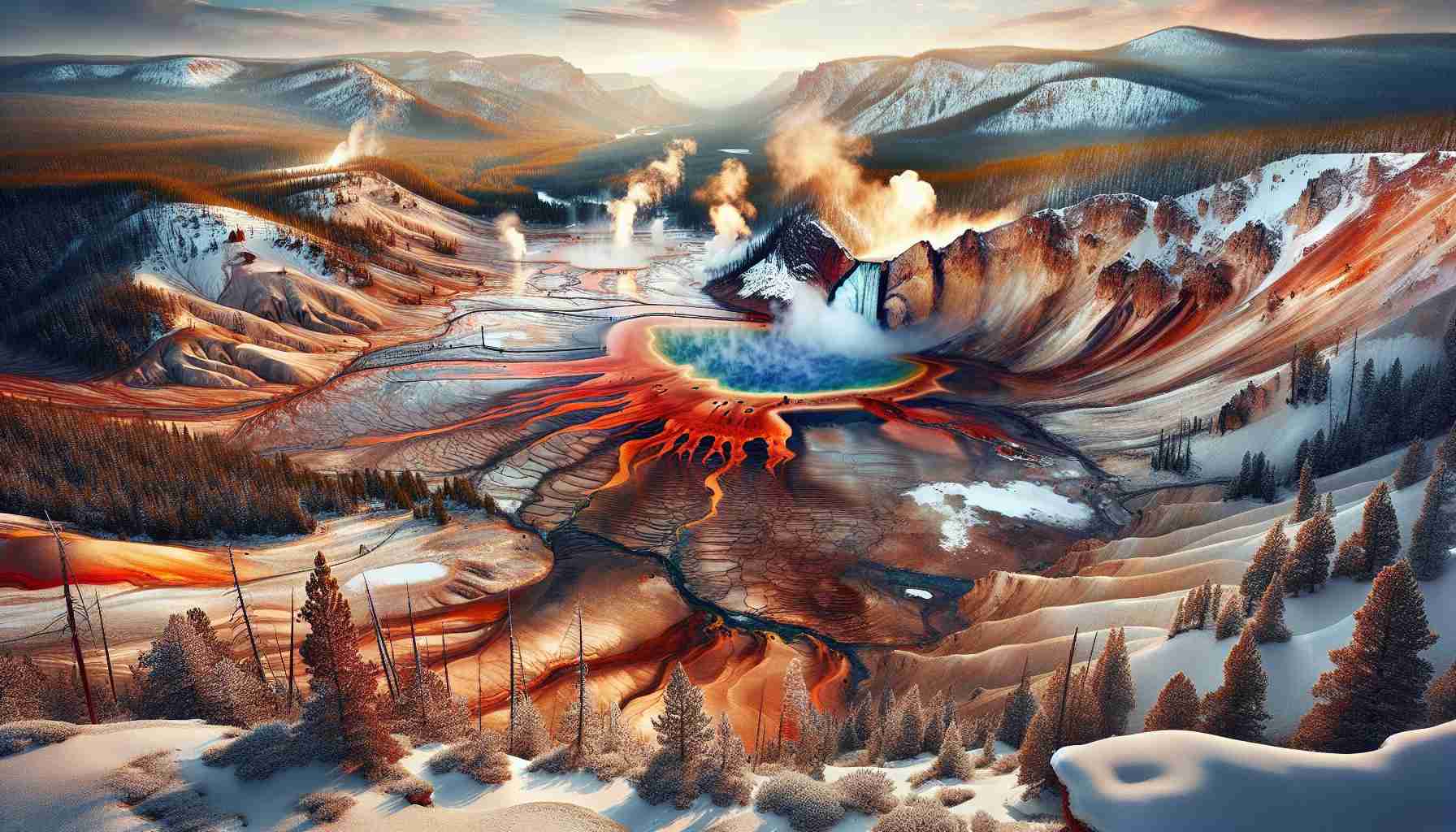Yellowstone National Park is not just a picturesque landscape; it’s also home to a potent supervolcano. Recent studies reveal that the magma beneath the park is on the move, signaling potential volcanic activity in a new area.
Research led by seismologist Ninfa Bennington from the US Geological Survey indicates that the magma reservoirs that fuel the park’s explosive eruptions are shifting northeast of the Yellowstone Caldera. This area could potentially be the center of future volcanic activity, a significant change as past eruptions have primarily occurred elsewhere in the caldera.
Yellowstone has witnessed three massive caldera-forming eruptions over the last 2 million years, shaping the landscape we see today. These eruptions are driven by rhyolitic melt, a thick, sticky magma that dwells in great quantities beneath the surface. Previous beliefs suggested this rhyolitic magma was supported by deeper reservoirs of basaltic magma, which is less viscous and denser.
Researchers utilized magnetotelluric surveys to explore the subsurface melt distribution across the caldera. Their findings uncovered at least seven regions with elevated magma levels at depths of 4 to 47 kilometers. Notably, the northeast region reveals an abundance of rhyolitic magma, estimated between 388 and 489 cubic kilometers, raising concerns regarding the potential for future eruptions.
Although the exact timing of these eruptions remains uncertain, this research sheds light on the dynamic and potentially hazardous nature of Yellowstone’s volcanic system. The findings were documented in the journal Nature.
Yellowstone’s Supervolcano: New Insights into Potential Volcanic Activity
Understanding the Yellowstone Supervolcano
Yellowstone National Park is renowned for its breathtaking landscapes and natural wonders, but underneath its beauty lies a significant geological threat—a supervolcano. Recent investigations reveal that the magma beneath this captivating park is shifting, indicating possible volcanic activity in a previously unexplored area, which could have serious implications for the future.
Research Highlights
A groundbreaking study led by seismologist Ninfa Bennington from the US Geological Survey has found that the magma reservoirs that power Yellowstone’s explosive eruptions are relocating to the northeast part of the Yellowstone Caldera. Historically, eruptions have mainly occurred in different regions; hence, this shift could signify a change in volcanic activity.
Key Findings
Using magnetotelluric surveys, the research team examined the distribution of melt beneath the caldera. The analysis identified at least seven regions exhibiting elevated magma levels at depths ranging from 4 to 47 kilometers. Most notably, the northeastern area contains a substantial reservoir of rhyolitic magma, estimated to be between 388 and 489 cubic kilometers. This significant presence of magma raises concerns regarding the potential for future eruptions, making the area a focal point for both researchers and geologists.
Implications of Volcanic Activity
While the exact timing of any potential eruptions remains unpredictable, the implications of these findings are profound. The area’s dynamic geology suggests that Yellowstone’s volcanic system could impact not only the park but also the wider region in unforeseen ways. For instance, if an eruption were to occur, it could disrupt air travel, cause regional evacuations, and impact agriculture.
Pros and Cons of Visiting Yellowstone During This Time
Pros:
– Unique Geological Features: Visitors can witness firsthand the evidence of volcanic activity shapes the landscape.
– Educational Opportunities: Increased research activity around the area may provide new insights and guided tours for tourists.
Cons:
– Safety Concerns: Increased volcanic activity poses risks to visitors; certain areas may become restricted or dangerous.
– Unpredictable Conditions: Travelers should be prepared for potential emergency situations related to volcanic activity.
Future Research Directions
Ongoing studies will focus on monitoring the shifts in magma and understanding the implications of this movement for future volcanic behavior. The data gathered will be crucial for enhancing the predictive models that scientists currently use to assess volcanic hazards.
Conclusion
The revelations about Yellowstone’s shifting magma indicate that this iconic national park is not just a natural wonder but also a reminder of nature’s unpredictable power. As researchers delve deeper into understanding this geologically active region, the balance between appreciation for its beauty and acknowledgment of its potential threats continues to be a topic of great importance.
For more information on national parks and updates on Yellowstone, visit National Park Service.
